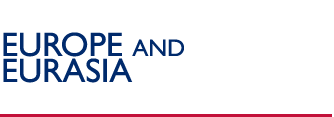Building Distribution Helps to Advance Media Sector in Azerbaijan
In late 2004, Khanhuseyn Aliyev came to the attention of USAID’s Media Advancement project, which was seeking a way to build Azerbaijan’s newspaper industry by improving distribution. Aliyev’s company, the The Gaya Distributing Company, was regarded as a reliable and honest organization by members of the print community.
Aliyev had developed a proposal which would allow him to expand his operation and increase his sales, by making Gaya more competitive with its primary rival, Qasid Distributing. Run and supported by the Government of Azerbaijan, Qasid was used to squelch the opposition press by withholding payments, “losing” newspapers and demanding large print runs from publishing houses only to return them as defective.
 |
| With support of the American people, USAID's Media Advancement project constructed 27 news kiosks (newsstands) to be disbursed among the seven cities and established 6 new regional distribution centers in the rural areas of Azerbaijan |
Aliyev’s plan was relatively simple; Gaya would establish a network of food markets with displays, solicit potential customers for home delivery and increase its activity in the street vendor arena. Kiosks were out of the question as the Mayor of Baku had forced Gaya to close thirteen of its outdoor facilities claiming they were eyesores and had refused Gaya’s offer to repaint them to meet with his approval.
USAID implementing partner IREX Azerbaijan proceeded with Aliyev’s project. Each month, he submitted detailed reports that showed consistent growth, both in Gaya’s business and in the tracking of target newspapers to gauge their sales and impact. The more Gaya’s business improved, the happier his vendors—the newspaper publishers—became. Instead of waiting up to six months for their payments from Qasid, Gaya was making remittances to them within forty-five days, providing them with honest counts and reducing their operations costs by lessening the need for huge print runs.
Bolstered by the success of his first project, Aliyev approached IREX once again when the original grant expired. This time, he sought to tackle the regions beyond Baku, improving the distribution network in Sumgayit, Ganja, Ali-Bayramli, Yevlakh, Lankaran and Zagatala where the State-supported distributor, Azermetbuatyayim, was the sole competition and perceived as more interested in selling candy, shoelaces and cigarettes than newspapers.
With support of USAID/Azerbaijan, Aliyev contracted for the construction of twenty-seven new kiosks to be placed among the seven cities and the establishment of six new regional distribution centers in the rural areas. To date, seven of the kiosks have been delivered to the regional centers, which will serve as headquarters for the next, home-delivery phase of the project
Back to Top ^ |


